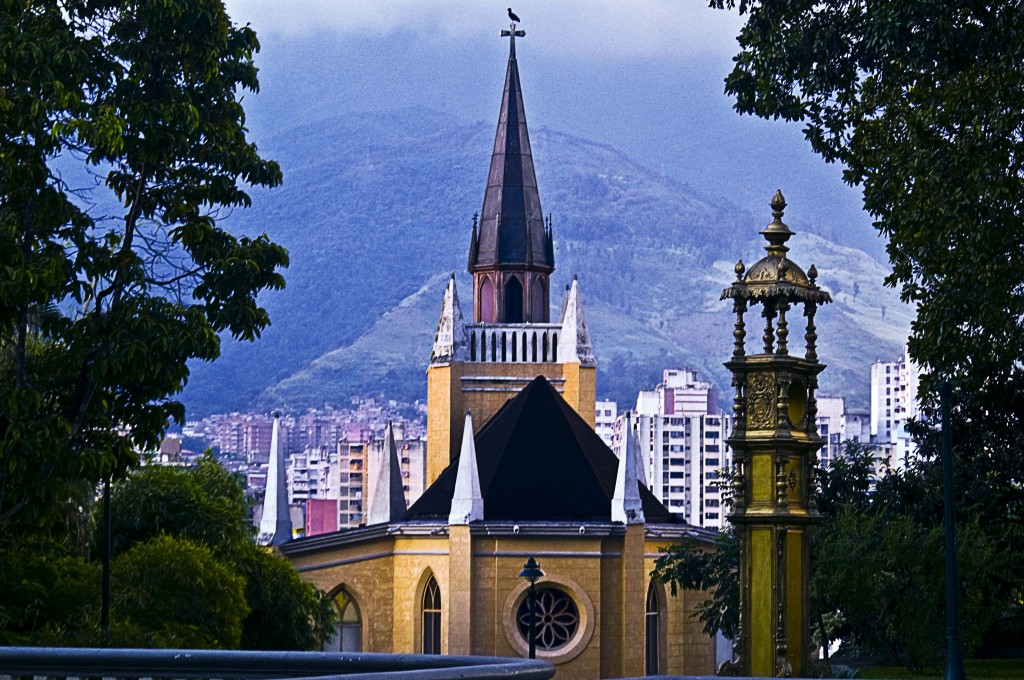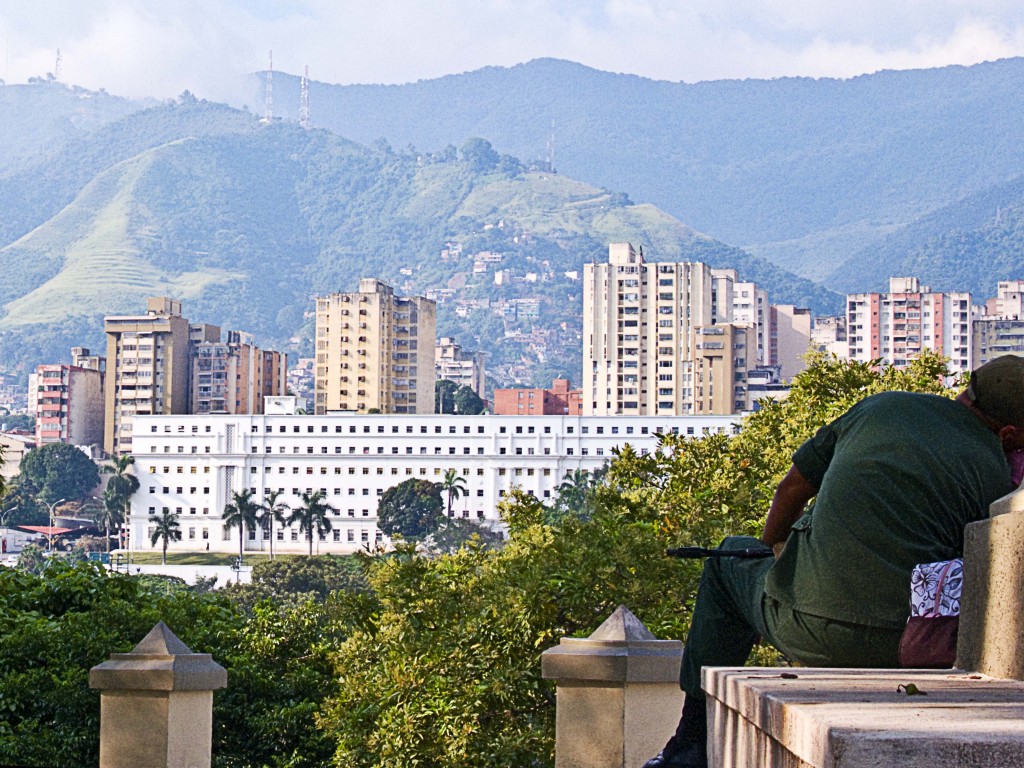A huge number of texts, descriptions, stories and articles have been written about Caracas. It is, without doubt, a city of many faces. From areas of deepest poverty to places full of luxury and excess, nobody can keep their opinion on the city to themselves. In the capital of Venezuela, once labelled ‘the city of red roofs’, reaffirmation of identities, mixing of perspectives, influences and the complex urban social apparatus live side-by-side, in the city which seeks to be the gateway to Venezuela.
Amongst the whirlwind of information provided by the city's residents online, the blogosphere plays its own part in describing Caracas. From the large number of people writing from both dark and light sides of this complex city, we have chosen several who devote themselves to recounting the latest developments in the lives of the Caraqueños, some out of a desire for a better city and a love for its culture, and others from a feeling of nostalgia for the noble Caracas of times past.
The blog Imágenes Urbanas [es] (Urban Images) is an example of an album which attempts to slow down the accelerated life of Caracas in order to admire and appreciate it. Here the most original aspects of the city which illustrate its faces and colours are brought to life. With her blog, Mitchelle Vidal succeeds in creating a compilation of spots which many may not be aware of, but which together make up a collection of symbols through which the new urban art movements present in Venezuela are expressed.
Amo ésta, mi ciudad pero hace rato que me debato entre la rabia de sentir cómo se nos viene encima desvencijada y la dicha de ver [la montaña] El Ávila recortando su cielo sin igual
TNT, author of the blog CARACAS TE ODIO [es] (Caracas I Hate You) shows us the aspects of the city which he considers unusual and which he hopes can be changed. The author describes the blog thus:
CARACAS TE ODIO trata de los desastres de una ciudad reflejados en el rechazo, resignación, desesperación y asombro de cuatro de sus habitantes…a partir de este momento se podrán versar en este sitio todas las ideas represadas sobre nuestra ciudad en todas las formas de expresión artística posibles: dibujo, pintura, fotografía, cine, teatro, música, literatura, etc.
CARACAS TE ODIO significa catarsis corporal y psíquica sobre el organismo que habitamos…
la ciudad es la expresión más alta de la cultura humana…y entonces, qué es lo que genera esta relación de amor inevitable y odio feroz hacia la ciudad en donde vivimos?
CARACAS TE ODIO focuses on the mess of a city reflected in the defeat, resignation, desperation and astonishment of its inhabitants…from this moment on, this site will be a place where all the repressed ideas about our city will be expressed in all possible art forms: drawings, paintings, photographs, cinema, theatre, music, literature,etc.
CARACAS TE ODIO represents a mental and physical catharsis of the organism we inhabit… the city is the highest expression of human culture… and so, what is it that generates this relationship of unavoidable love and violent hatred towards the city we live in?
From another perspective, the blogs Ser Urbano [es] (To Be Urban) and Picnic Urbano [es] (Urban Picnic) share ideas, photographs and plans organised by the authors of these two blogs based in different areas of the city. According to its space on Twitter, @serurbano_org “is a group which organises games in public spaces.” Since its creation, various activities including street parties, picnics and even pillow fights [es] have taken place.
La Buena Vida que se nos vende en la publicidad toma lugar únicamente en espacios privados como un bar trendy, un restaurant costosísimo, un hotel de lujo, tu carro nuevo, un resort con playa privada donde no tienes que mezclarte con la gente del lugar.
Pero hay otro concepto del buen vivir, la idea que una vida bien vivida significa conocer gente diversa, compartir con los que no tienen y afirmar nuestros derechos respetando e incluso apoyando al otro, cosas muy relacionadas al hecho de jugar como locos en las plazas de nuestra ciudad.
The Good Life which we are sold by advertisers takes place only in private spaces such as trendy bars, expensive restaurants, luxury hotels, a new car, a resort with a private beach where you don't have to mix with locals.
But there's another vision of good living, the idea that a good life means meeting different people, sharing with those who have nothing and reaffirming our rights respecting and supporting others, things which are brought out by playing crazy games in the squares of our city.

Capilla Nuestra Señora de Lourdes, in the Parque El Calvario in Caracas. Image by Nelson González Leal, Copyright Demotix
A record of the Caracas of times past features in the blog Caracas Perdida [es] (Lost Caracas), linked to the Foundation of Urban Memory, whose archive serves to publish photographs of the city in bygone eras. The posts in this log lament the loss of demolished areas and the symbols of the classic architecture of Caracas:
Esta es la cara oculta de la luna de CARACAS. Todo aquello que amamos de nuestra ciudad, pero que manos salvajes destruyen. Todo lo hermoso, lo que tenia significado, lo que nos decia algo, y que hoy luchamos para que sea RECONSTRUIDO algun dia en nuestra ciudad… ese paraíso perdido, mas no para siempre
Meanwhile, Mirelis Morales Tovar's blog, Caracas Ciudad de la Furia [es] (Caracas City of Fury), has won prizes from various organisations. The blog is based on reports of day-to-day events and on images left by urban movements, of hidden nooks and of projects aiming to develop the city, among other things. The blogger describes herself as:
Ciudadana de a pie, de a moto, de a autobús, de a Metro y de a vehículo automotor
It is no surprise that the reactions provoked by the city are so many and so varied. The immense mass of people who live, work and study in Caracas interacts and struggles with the speed of the flow, urban violence and the city's famous traffic. In Caracas, as in a large number of the great capitals of Latin America, many different types of life can take place at the same time. In any case, the memories of the noble Caracas of times past continue to form a part of the rhythm. To end, we present some of the images shared on YouTube by nostalgic Caraqueños:
Images which contrast with the modern character which is the contemporary face of Venezuela's capital.







